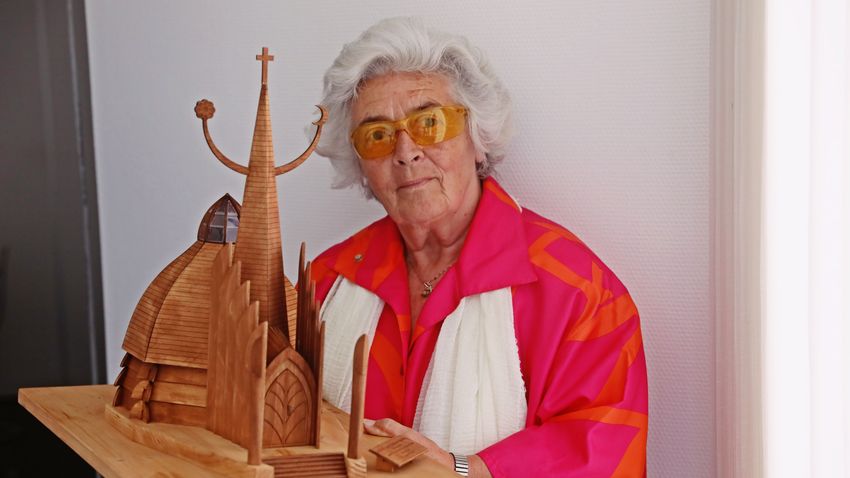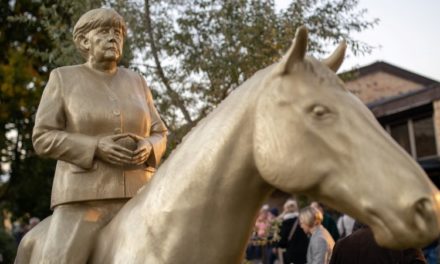Imre Makovecz, the XX. The greatest Hungarian architect of the 20th century designed a log chapel for Ispánk, unparalleled in every respect, measuring only seventy-two square meters. The interior design of the building is unique in all of Europe: eight huge frescoes will depict the defining events of the four and a half thousand-year history of the Órvidék, the Castle Region and the whole of Europe.
Imre Makovecz designed the chapel after 14 years of joint work. - After the successful visual design, the implementation was first cut in two by Covid, then by the war. We can't wait any longer. According to Imre Makovecz's testament, such a building can be built in the most dignified way by the moral imagination, willingness to sacrifice, and intuitive vision of the future in the most free way - clinical psychologist Zsuzsa Bistey, founder of the Filantroposz Műhely, told Magyar Nemzet .
In 2010, already struggling with his advanced illness, the renowned architect drew the plan for the chapel recommended to the Guardians in Ispánk, a village home to 111 people, where two Makovecz apartment buildings already stood at that time. Zsuzsa Bistey said that
Imre Makovecz entrusted them with this chapel so that it would also be the island of culture: a place of spiritual remembrance, because without remembrance there is no self-knowledge, no loyalty, the will to carry the past into the future, but there is no thinking either.
- The Makovecz chapel of the Guardians in Ispánk will certainly be a major tourist attraction in the region. However, since it was designed by the person who naturally transplanted his own archaic memory into the present and the future, the visitor entering the building's interior forms and memory paintings on its interior walls will also experience something similar, Zsuzsa Bistey believes.
According to his story, Imre Makovecz believed that all chapels, churches and cathedrals are places of remembrance. Man became religious because the natural connection with his spiritual homeland disappeared from him, but in the depths of his consciousness the certainty remained:
the source of its existence and being is not found on earth, but in the spiritual world.
His experience was no longer of this world, but he believed that he was not just an earthly being. The churches were built in memory of this aspiration. This chapel is also about this, but it is also about something more. In addition to reverence, it encourages people to awaken long-term memory in themselves. This memory is reawakening today and takes people back through the ages to where they came from. Makovecz ordered that
the four and a half thousand year history of the region should be displayed in pictures on the inner walls, but also the mysteries behind the historical events, the happenings of the celestial world and the opposing forces, the powers of darkness.
- A memory of a double nature will appear in this chapel - emphasized Zsuzsa Bistey. – It will be a place of faith and a place for awakening historical conscience and historical memory at the same time. It is not enough to be conscientious in such a way that one lives in the age, one must know the past of the place, of the environment where one arrived on Earth. You have to know that it depends on me what this area will become in the future. This is what Imre Makovecz called historical conscience.
He said that history is not a matter of education, but of self-knowledge.
The chronicle of human existence. How did the most primitive consciousness develop into the high degree of intellect, feeling and will that today wants to know again about its millennia-old spiritual heritage. Throughout his life, he testified that a new day was about to rise inside the continent, a day of a higher human intellect. This also brings a higher morality to one's life, which is based on the knowledge of the laws of fate. He emphasized the strongest point of this: "You harm anyone, you harm yourself the most."
As he said, there is not a single log chapel in Europe. Imre Makovecz planned to build it from this material because
the vernacular architecture of Úrség is built of logs and adobe. In this way, the building will fit exactly into the architectural past of the region.
- We started the tender four years ago, for four years it seemed hopeless where we would find suitable trees. The forest larch is the tree that stands for thousands of years, it can be found in Siberia or in the French Alps. The beams are ten meters long and have a diameter of 40-45 cm. It turned out recently that the amount needed for the chapel has been standing here for two years, twenty kilometers from us. This is how the powers of Providence work, but they also work in the people, who with an incredible intuitive will, moral imagination and love of the process added the material foundation with the help of which this wood is ours and at the end of November we will place the foundation stone of the Makovecz chapel in the land of our Father - he summarized Zsuzsa Bistey.
Cover photo: The model of the Makovecz chapel was made by Péter Pál Pelle (Photo: Máté Bach)













